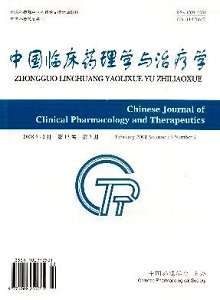Effects and possible mechanisms of baicalin on the atherosclerosis rabbits
MA Jun, WU Xiao-dong
2008, 13(2):
188-194.
 Asbtract
(
170 )
Asbtract
(
170 )
 PDF (602KB)
(
387
)
References |
Related Articles |
Metrics
PDF (602KB)
(
387
)
References |
Related Articles |
Metrics
AIM:To investigate the effects and possible mechanisms of baicalin on the atherosclerosis rabbits.METHODS:Thirty healthy New Zealand white rabbits were divided randomly into five groups: normal control group (A group, n =6) and fed with normal diet, atherosclerosis model group(B group, n =6), baicalin therapic group(C group, n =6), bacalin preventive group(D group, n =6), and positive control group(E group, n =6), the last four groups fed with hypercholesterol diet for 12 weeks.Treated with bacalin 300 mg/(kg·d), and simvastatin 5 mg/ (kg·d) additionally for 2 weeks in C and E group respectively from the tenth week.Treat with bacalin 100 mg/(kg·d) for 12 weeks in D group.Serum lipids and liver lipids were detected with standard enzymatic assays.Atherosclerotic plaque/intima size ratio of area and NF-κB content in blood vessel tissue were examined.Enzyme-linked immunosorbent assay (ELISA) was employed to monitor the levels of serum TNF-α, IL-1β and Adiponectin.RESULTS:Atherosclerotic plaque intima size ratio of area decreased in C, D and E group than in B group(P <0.01).The levels of Blood lipids, liver lipids decreased in C, D and E group than in B group(P <0.01).Serum TNF-α, IL- 1β, and adiponectin decreased in C and D group than in B group(P <0.01, P <0.05).The NF-κB activity in C and D group were lower than B group(P <0.01). CONCLUSION:Baicalin improve atherosclerosis not only by decreasing blood lipids, but also by anti-inflammation through increasing serum levels of adiponectin, decreasing activity of NF-κB in atherosclerotic focus and serum levels of TNF-α, IL-1β.


